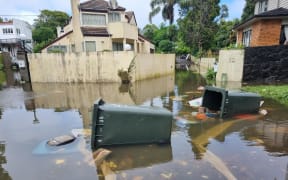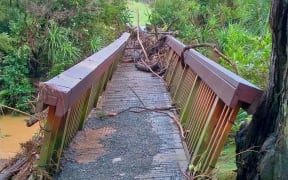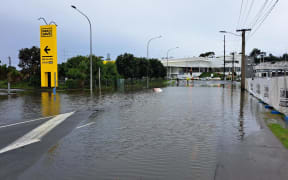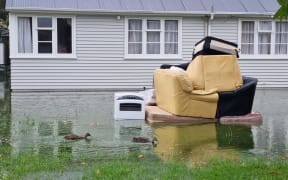
Peter Nelson (left) and Dion Pou, next to the creek in Te Atatū that Auckland Council plans to turn into part of a stormwater pipe. Photo: RNZ/ Jessie Chiang
Plans to concrete in one of the last creeks in Auckland's Te Atatū Peninsula to turn it into a stormwater pipe are being questioned by a community group.
Ageing infrastructure and storms had exposed the urgent need to upgrade the city's pipes. And Auckland Council was planning the work at a creek on the western side of the peninsula, where it runs beside Matipo Road, pops under the ground and comes back up into Henderson Creek, also known as Te Wai-o-Pareira.
Rivercare community group ecologist Dion Pou said that last little creek had social and cultural importance.
"Just a generation ago we had whānau in here who were fishing tuna (eel) out of this creek and out of the estuary connected to it and that was their kai.
"So culturally, we lose all of that and socially, this is a learning space for kids from the local school."
To this day there were still tuna in the creek, he said.
But all that could be about to change, according to Auckland Council's Healthy Waters plan to expand its stormwater infrastructure.
"This last strip of creek will be piped, essentially, and then covered over," Pou said.
But there had been limited consultation with the community, he said.
Further downstream, Healthy Waters initially looked at putting a wetland in the area, which Peter Nelson, who was also part of the Rivercare Group, said was much needed.
"The proposed wetland area here would have provided some retention of ... sediment, some retention of pollutants from road run off [and] from the building activity that's going on in Te Atatū Peninsula," he said.
But the wetland idea had since been scrapped.
Pou said while Auckland Council was trying to improve stormwater systems and, as a result also mitigate flooding, it had given no consideration to wider impacts.
"That's the problem when we have essentially agencies working within silos, who don't understand, and they're not even necessarily living here, so they've got no connection whatsoever to basically that whole system, which is environment, ecology, and the social and cultural network that is all intertwined with it," he said.
But Auckland Council's Healthy Waters head of planning Nicholas Vigar said the team tried its best.
"We're always going to get that levelled at us.
"Even with the best efforts in the world, we're not going to meet some people's expectations."
A 2.5m wide box culvert needed to be created to connect to the existing stormwater outfall, he said, leaving no room for the small length of stream.
Vigar said the team planned to offset the stream loss with a longer section of stream being daylighted (returned to its original stream state after being covered up) elsewhere in the project. Currently that stream was covered by grass and pathway in a reserve.
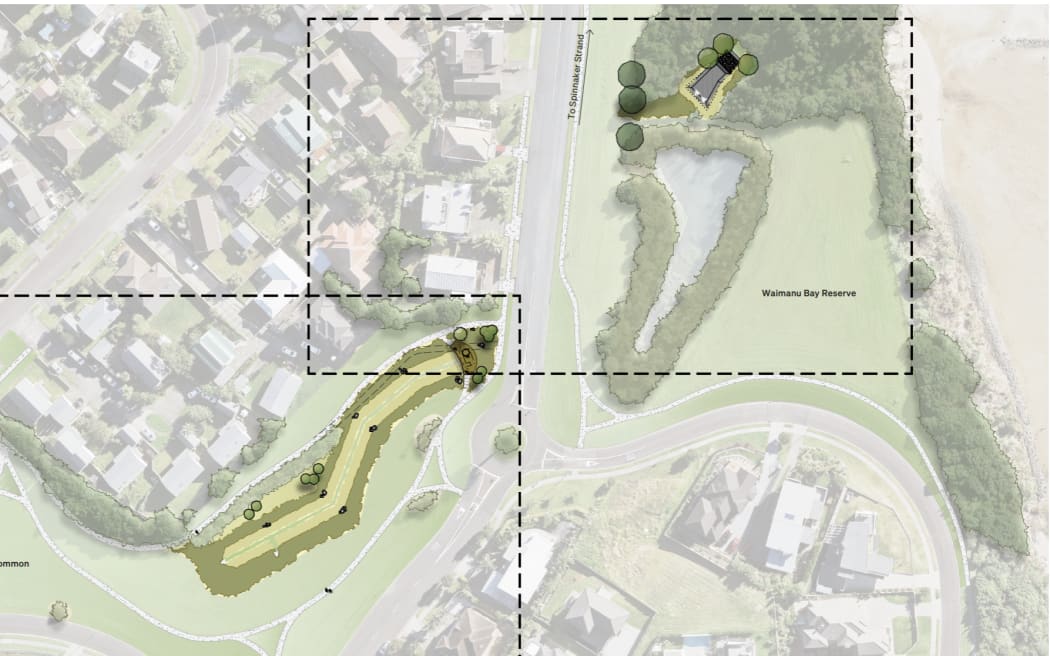
Bottom left: A section of stream under Waimanu Bay Reserve on the eastern side of Te Atatū Peninsula that Auckland council plans to 'daylight'. Top right: The current outfall, where they newly daylighted stream would join the existing outfall after travelling under the road. Photo: Supplied/ Auckland Council
As for the wetlands, Vigar said there were plans for a engineered treatment device to stop some contaminants from flowing out to sea, which was a more cost-effective option.
"That won't have fully the same impact.
"That will get oils and hydrocarbons ... off the road. It will get core sediments, so it will stop all the trash and the debris getting into the stream, but it won't have quite the same impact on the fine sediments or the metals," he said.
Vigar said it was early days for the plan.
"We're not even reaching the consent stage yet, we're just trying to work our way through these issues.
"We haven't talked to iwi yet, so there's nothing that's a done deal about this."
There would be an opportunity for the Rivercare Group and others to give feedback once formal consultation starts, he said.
